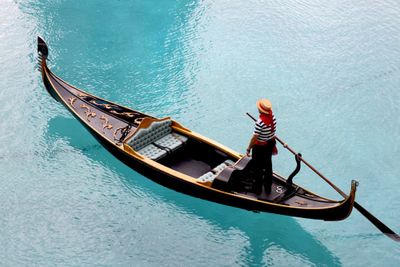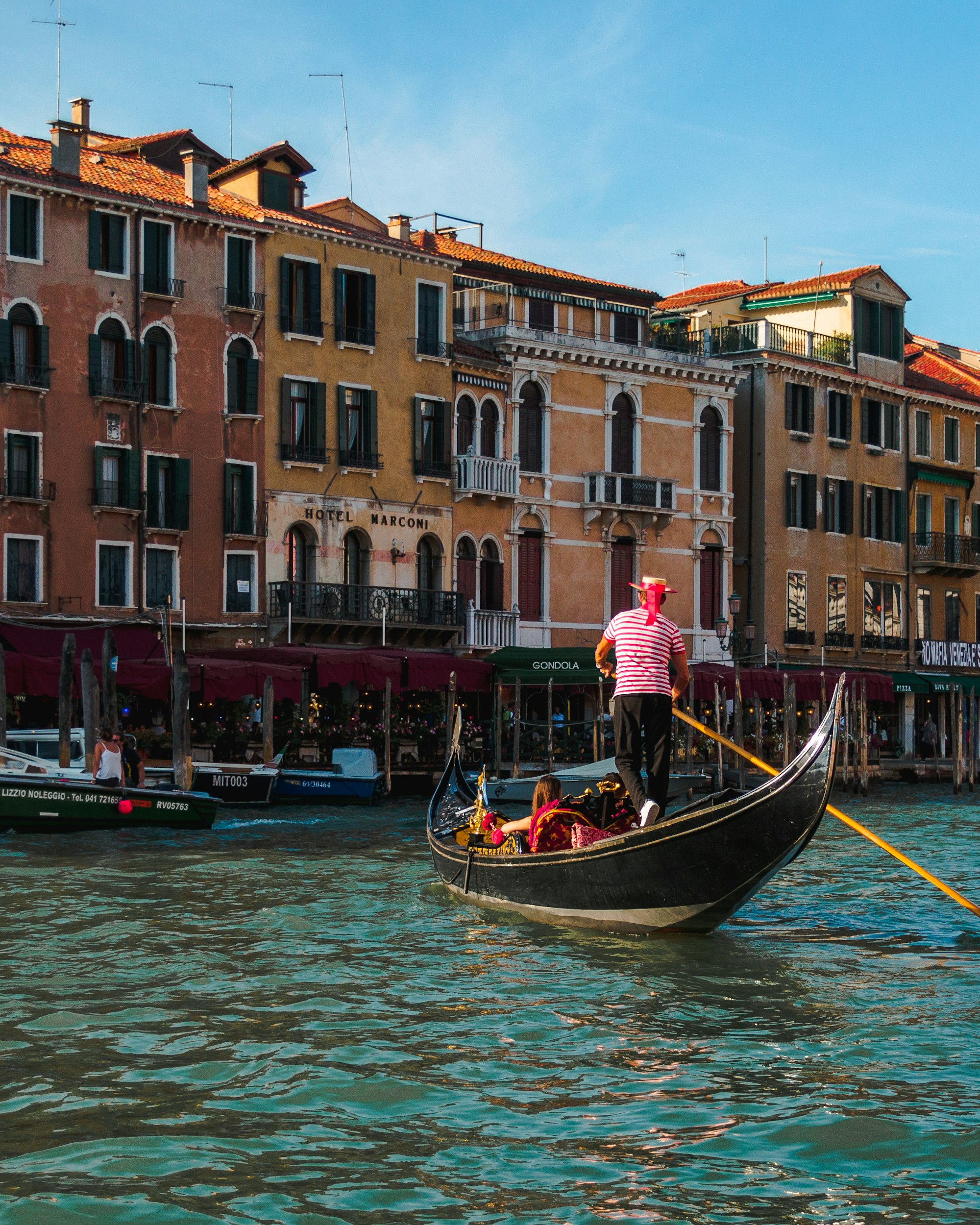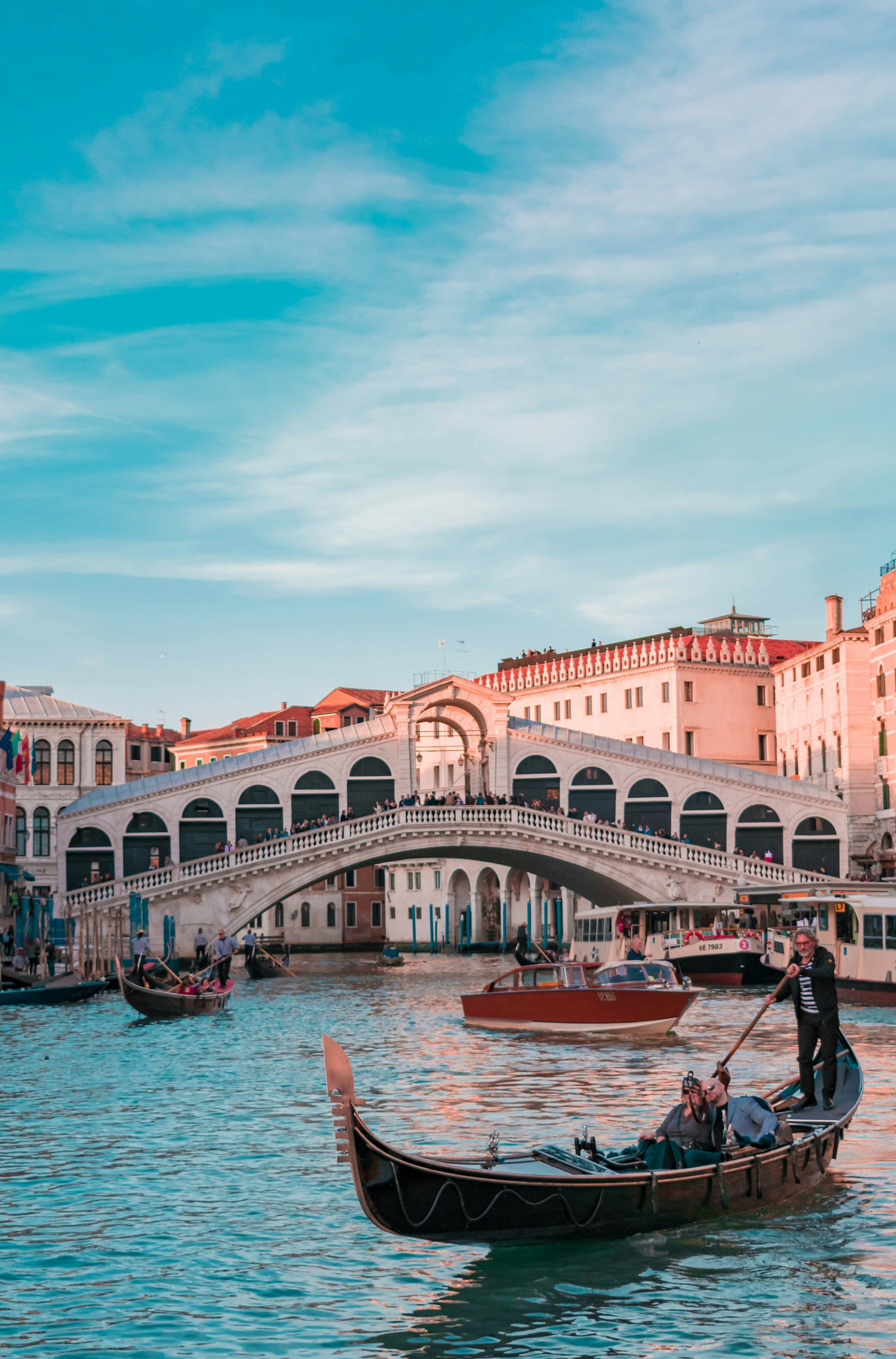The Gondola is the symbol of Venice. Everyone coming here would like to ride them on the Grand Canal, passing beneath the Rialto Bridge. Venetian gondolas are so iconic that most people do not really focus on their history.
Why are they black? Why are gondolas so shaped? Who built them?
Now that we have raised some interesting questions, time has come to start our... gondola ride.
Let's discover more about the history of the gondola.
The History of Gondola in Venice since its very beginning

No one actually knows how it all started.
It seems, however, that the history of this typical Venetian boat started together with the history of Venice. The first gondola, in fact, was mentioned in 1094.
These kinds of boats, in fact, were 'given' by the Doge of Venice, Vitale Faliero, to the population. Using this new boat, in fact, the transfers of the Venetians through the lagoon and its narrow canals would have been much easier.
However, in almost one thousand years so many things have changed in Venetian history.
Were the first gondolas similar to the most recent ones?
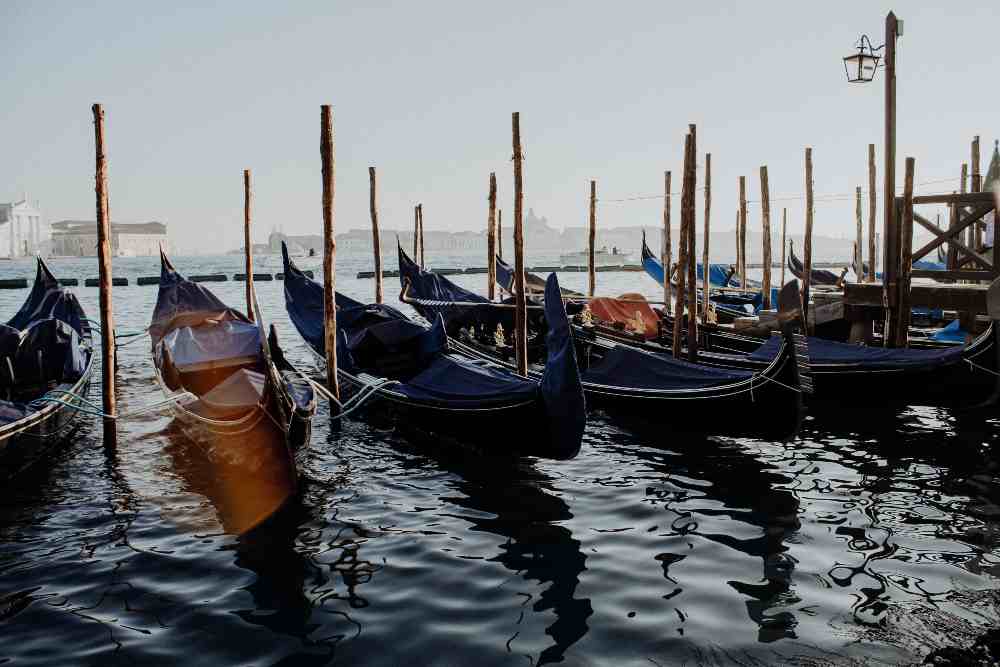
Now gondolas are all black with a flat bottom, which is ideal for the Venetian lagoon.
In the past, gondolas were different. They were shorter, larger and, above all, they were totally symmetric.
All began to change in the XVI century, when gondolas started to be built in a shape which is more similar to the actual one.
In the XIX century, Venetians started to build longer gondolas, of approximately 11 meters long, like they are today. Additionally, a little asymmetry was introduced. It was necessary for the gondoliers to make the ride easier.
Who used the Venetian gondola at the beginning?
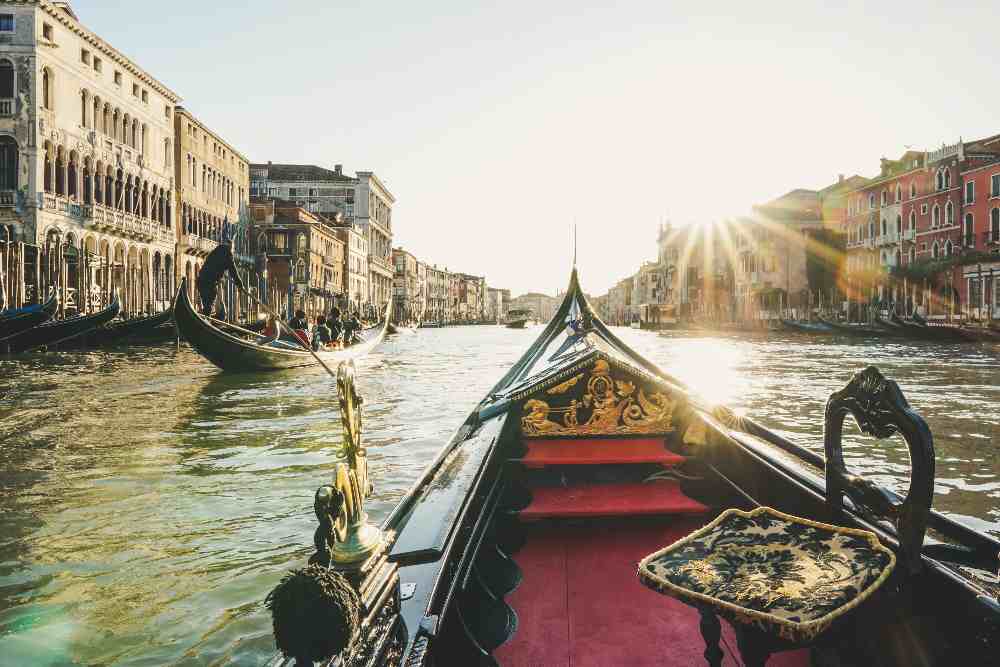
Even if it seems that it was the Doge Vitale Faliero that gave the gondola to the people of Venice, at the beginning gondolas were reserved only to rich people and noblemen.
This amazing boat, in fact, had to show off the richness of its owner. That's why, at the very beginning, they were sumptuously decorated.
In the XVII century, it seems that the number of Venetian gondolas was close to 9 thousands. Nowadays the number of gondoliers is close to 400, instead.
The origin of the tradition of the gondolier standing and singing a song
It is called the song da batèlo (translatable as the song of the water bus).
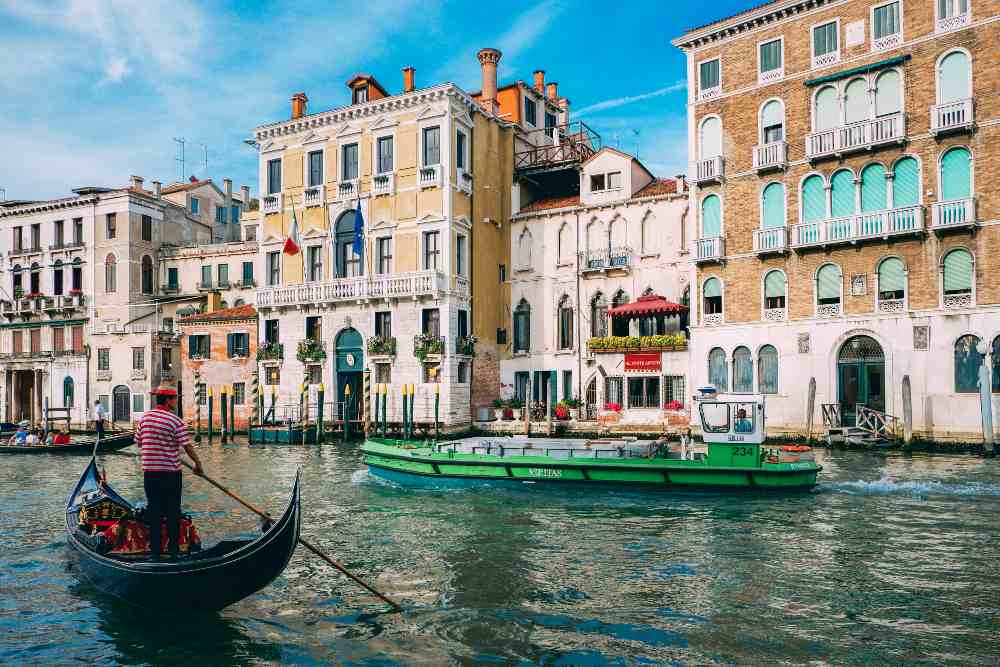
Back in the days, in fact, noble families used to enjoy their time in the city with a tour on their private gondolas. Like a Sunday walking tour you would do in any other city.
During the navigation, the families were sung songs by the gondolier. These songs generated a music genre that was called songs da batèlo.
If you ask for and book the additional service, you could be sang the song da batèlo by a gondolier, like noblemen did centuries ago!
So, imagining you are doing your gondola ride and your gondolier is singing the most beautiful song, would you like to know more about the history of the shape of this boat?
The History behind the shape and color of the gondola
This flat-bottomed Venetian boat hides an interesting history about its shape and color. Let's explore it a little bit more.
Why is the Venetian gondola painted black?
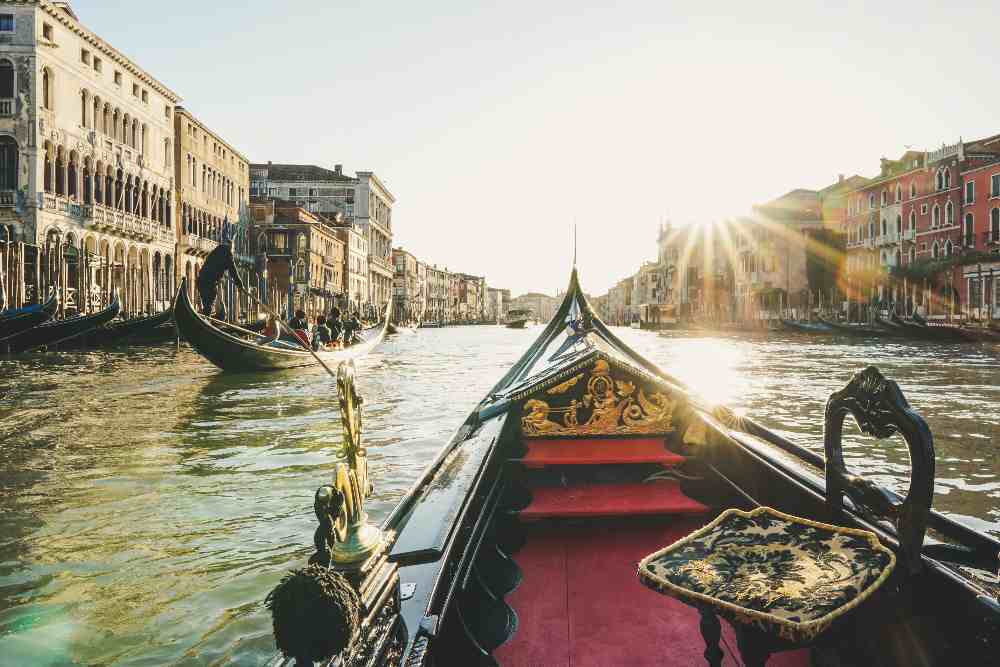
Have you ever figured this out? Why, among the colors in the world, Venetians selected black for their most important symbol?
The answer to this question has to be found back in the past, when gondolas were used just by the richest families in Venice, as we saw.
Back in the centuries, these boats were a powerful means to show off the richness. In fact, these boats were covered with precious fabrics and gilding. Underneath all these precious ornaments, however, they were black because of the use of pitch as a waterproofing agent for the hull.
In the XVII century, Venetian Senate asked the population not to cover their gondolas, limiting all the excessiveness. Black, after all, was an elegant color and therefore suitable for a rich means of transportation (such as carriages).
Additionally, at the time, the color of mourning was pavonazzo or paonazzo, a color similar to purple red.
And now that we know why is black, would you like to know more about its prow?
The beautiful iron prow head of the gondola
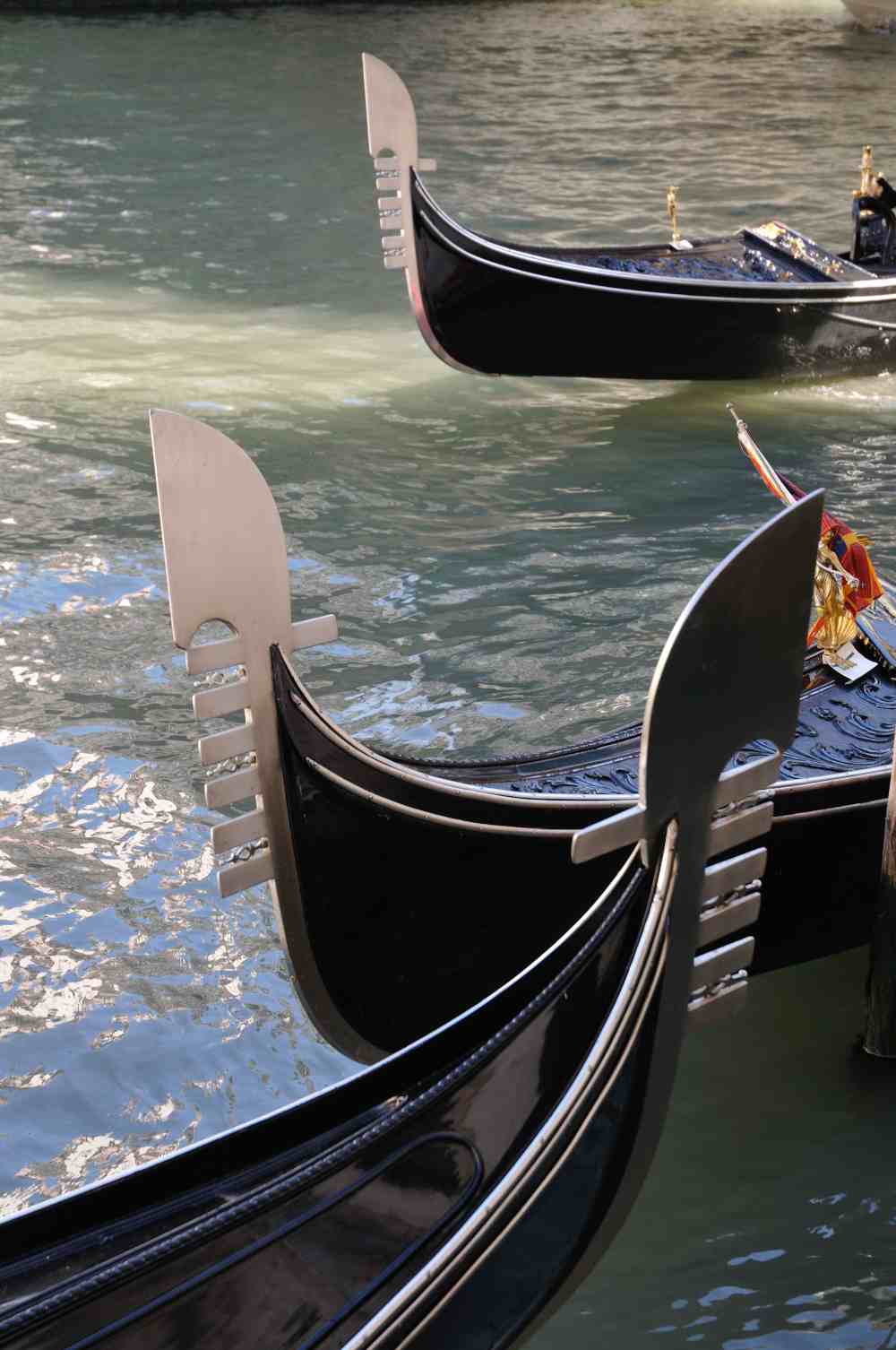
The prow head is not just an aesthetic ornament. It is a powerful symbol of Venice and the Most Serene Republic (Serenissima).
- The six metal lines correspond to the 6 Sestieri of Venice (Dorsoduro, Cannaregio, Castello, San Polo, San Marco, Santa Croce).
- The rear-facing tooth shape symbolizes Giudecca island.
- All the prow seems like an inverted “S”: it's a reference to the Grand Canal and the famous Rialto bridge.
- The upper part of the prow has the shape of the Doge’s hat.
Sometimes also three leaves are added: they represent the three main islands of the lagoon: Murano, Burano and Torcello.
Venetian Gondola ride today, among tourists and rowing races
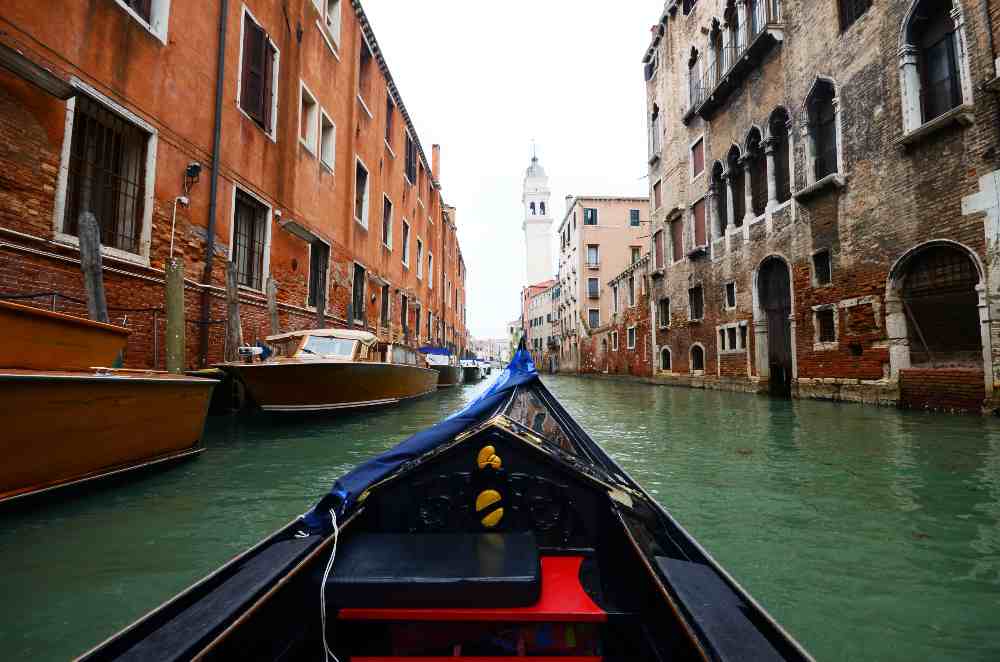
The primary use of these boats today is to carry tourists from one place to another and let them live the most incredible and romantic adventure at a fixed price (would you like to know how much is a gondola ride?).
However, they are also used in special regattas (rowing races) held amongst gondoliers using the local techniques called Voga alla Veneta.
The most important race: the Regatta Storica
Among the most famous competitions, Regatta Storica is certainly the most famous one. Held in September, it is one of the greatest events in the Venetian calendar.
After a sumptuous boat procession takes place on the Grand Canal, the competitive race starts, performed by boat of the same kind (gondolas and other boats).
Now that you know everything about the history of the gondola, are you ready for your next ride?
History of gondolas is so amazing, even if it is mostly unknown.
We hope that next time you'll come to Venice you will appreciate these Venetian symbols even more.


